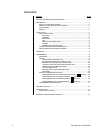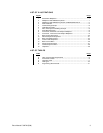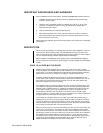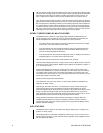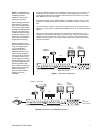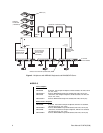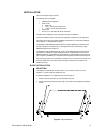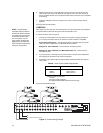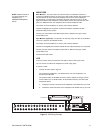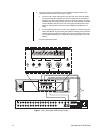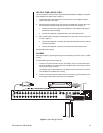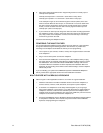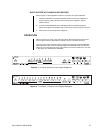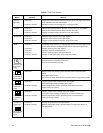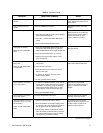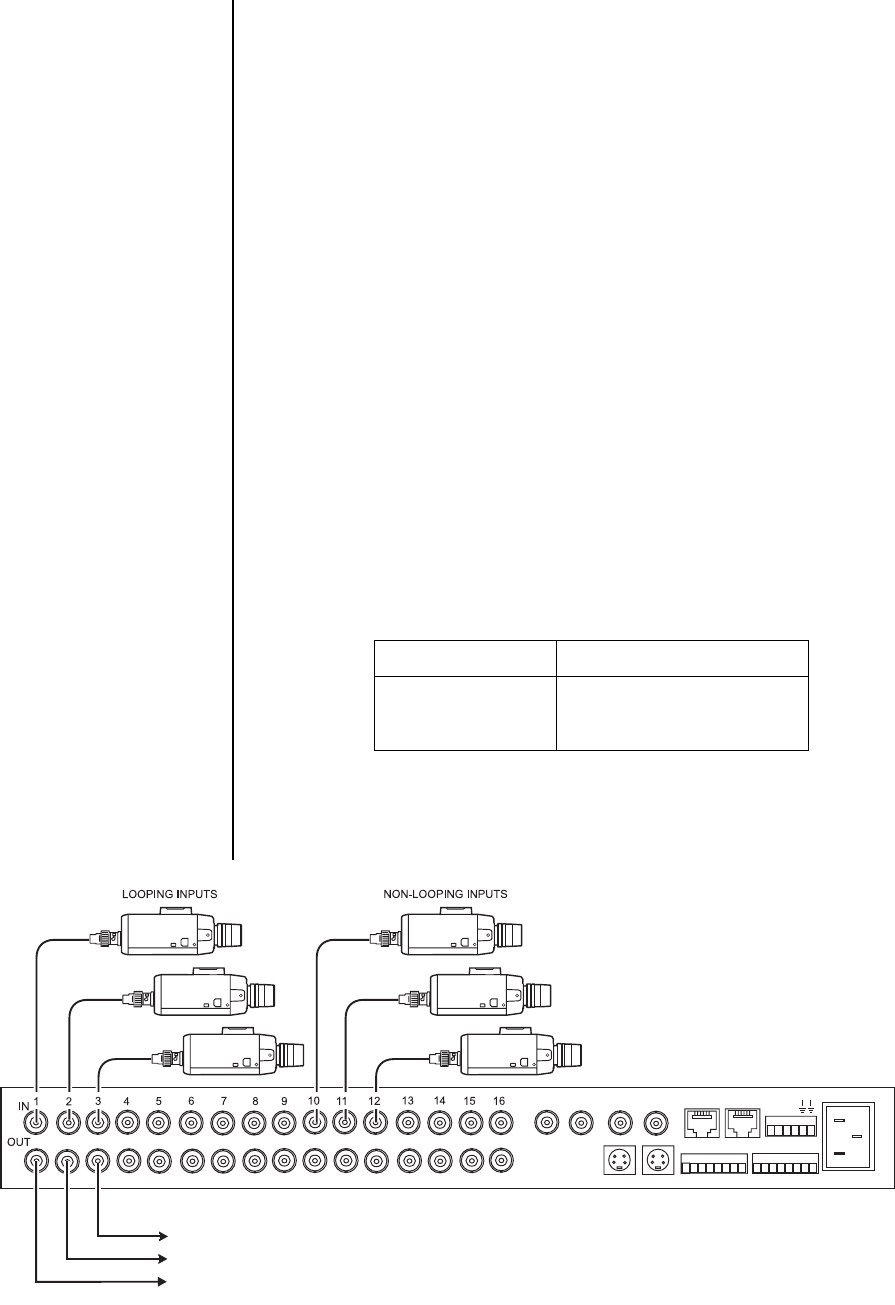
10 Pelco Manual C1927M (5/99)
3. Attach the rack ears (C) to the multiplexer. The rack ears are universal and can be
used on either side of the unit. Attach the ears with the 4-40 x .375-inch screws (D)
that are supplied with the ears. Only the two bottom holes on the rack ears are needed
for mounting.
4. Install the multiplexer in the rack using the four 10-32 x .750-inch screws that are
supplied.
Proceed to the
Cameras
section.
CAMERAS
Video inputs can come from any conventional source. No external camera synchronization
is required. Refer to Table A for the type of video coaxial cable to use.
To connect cameras (refer to Figure 5):
1. Connect the coaxial cables from your cameras or receivers to the IN connectors. If
you are using moveable cameras, the receivers must be Coaxitron
®
compatible.
Stand-Alone Multiplexer - Connect fixed cameras. Moveable cameras may be
used if the video is looped out to an MPT9500 Series controller.
Multiplexer with KBD4000 - Connect fixed or moveable cameras.
Multiplexer with KBD4000 and MX4000SVR Server - Connect fixed or
moveable cameras.
2. If you want to loop a video signal out to another device, connect coaxial cables from
the looping OUT connectors to the external equipment.
3. Termination of the camera inputs is programmable and is described in the
Program-
ming
section.
Proceed to the
Monitors
section.
Table A. Video Coaxial Cable Requirements
Cable Type* Maximum Distance
RG59/U 750 ft (229 m)
RG6/U 1,000 ft (305 m)
RG11/U 1,500 ft (457 m)
* Minimum cable requirements:
75 ohms
All-copper center conductor
All-copper braided shield with 95% braid coverage
Figure 5. Camera Wiring Example
16
VCR
MAIN
SPOT
OUT IN
SVHS
IN COM OUT
ALARMS
12345678 91011 14151213
110-240V~50/60Hz
NNH
OC
C
S
LOOPED VIDEO OUTPUT
NOTE:
Camera power
should be wired in phase to
all cameras. When cameras
are sequenced, they will roll
on the spot monitor if they
are out of phase. On the
main monitor, cameras are
digitally time corrected and
will not roll when sequenced
if they are out of phase.



